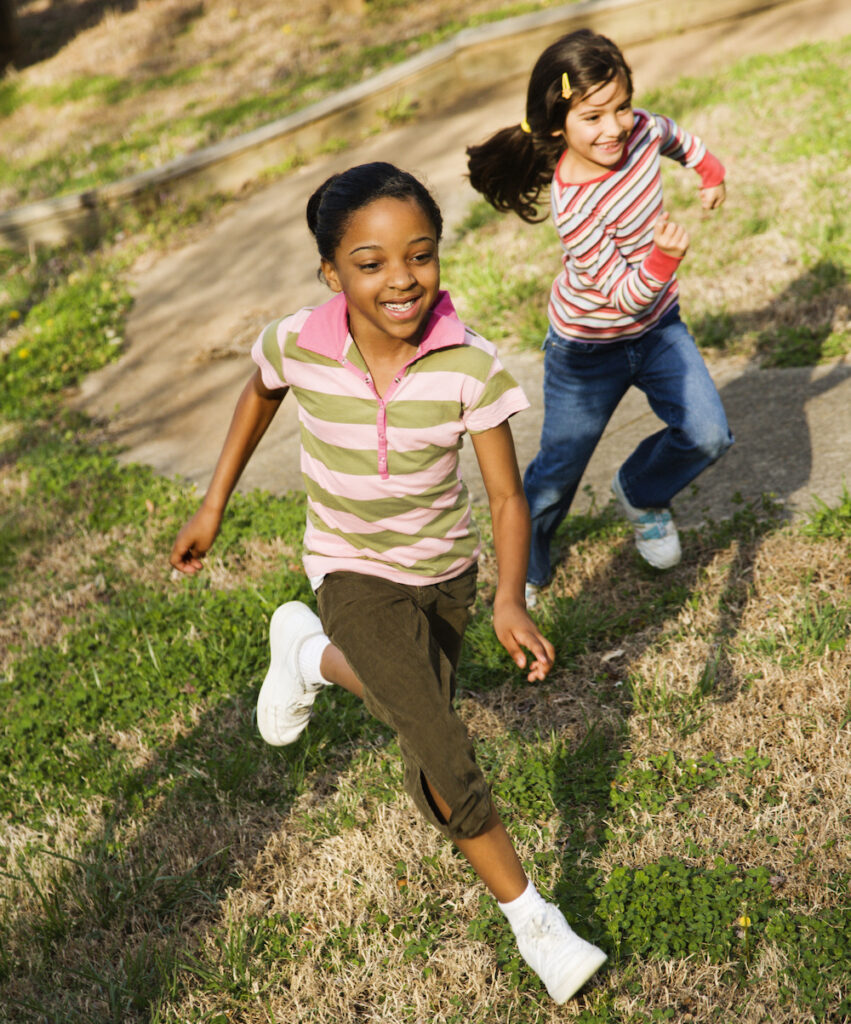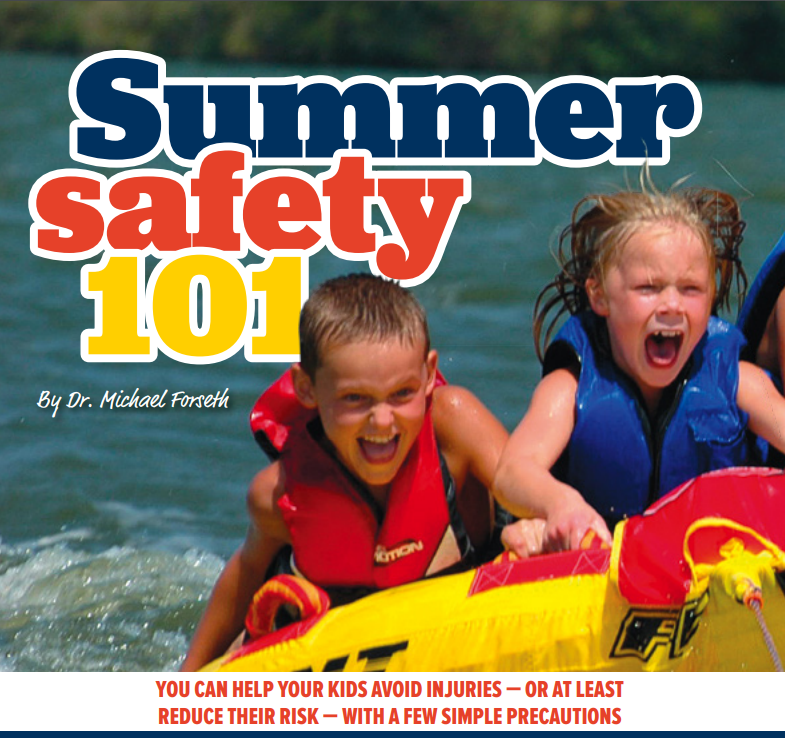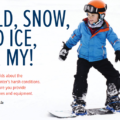After being cooped up from such a late and snowy spring, we Minnesotans are busting at the seams to get outside and simply be active! But, it’s important to remember that spring is typically a busy time of the year for the board-certified ER doctors at The Urgency Room’s three Twin Cities locations. Why? Here are 10 of the top reasons we see patients of all ages this time of year:
Trampolines
Trampoline-related injuries are responsible for as many as 92,000 emergency room visits annually. We treat countless young patients with broken bones, sprains, and strains from trampoline-related accidents. Protect your children by laying some ground rules:
- Only one person at a time should jump on the trampoline
and - Supervise all children.
- Do not allow jumpers to attempt somersaults.
- Make sure trampoline springs are covered with padding.
- Do not place the trampoline near trees or other structures.
- Only allow children six and older to jump on full-sized trampolines.
- Place an enclosure around the trampoline to prevent falls to the ground.

Bikes and Skateboards
Scrapes, scratches, and broken bones are common injuries for children riding bikes, skateboards, scooters, and other equipment. The injuries we worry most about are head injuries. According to the CDC, millions of Americans ride bicycles, but less than half wear bicycle helmets. For example, a national survey found that only 48% of children ages 5-14 years wore bicycle helmets when riding. Older children were less likely to wear helmets than younger children.
- Bike helmets are a must for protecting riders of all ages. We also suggest knee and elbow padding for less experienced riders. Most importantly, do not allow children to ride bikes near heavy traffic areas.

Playgrounds
ERs treat more than 200,000 children ages 14 and younger for playground-related injuries every year. Children ages 5 to 9 are at the highest risk of injury on a playground.
As a parent, be sure to talk to your child about playground safety:
· Remind your child of basic playground rules, such as one person on the slide at a time and no running in front of moving swings and teeter-totters.
· Make sure children know to slow down before getting off a swing and never walk near someone swinging.
· Don’t allow children to play on wet equipment.
· Parents: don’t go down the slide with your children. Commonly, a child’s tibia is fractured when his or her leg is pinned between the adult and the slide.
· Remove any necklaces and jewelry on children that may catch on playground equipment and cause injury.
· Remove drawstrings and hoods from clothing that could catch on equipment.
· Children should wear proper footwear and not be barefooted.
Swimming pools
According to the National Safety Council and Foundation for Aquatic Injury Prevention, an estimated 5,000 children ages 14 and under are hospitalized due to unintentional drowning-related incidents each year; 15 percent die in the hospital and as many as 20 percent suffer severe, permanent neurological disability. Play it safe around water this summer by following these guidelines:
- Teach children to swim. Most children can learn to swim at about age 5 — but know that swimming lessons, or even knowing how to swim, won’t prevent a child from drowning. Don’t assume you’ll hear a child in trouble in the water. Child drowning is a silent death.
- Invest in proper-fitting, Coast Guard-approved flotation devices (life vests) for your children.
Falls
Spring is when we clean in and around our house. That means emptying gutters of debris left over from winter storms, repainting the house, or cleaning above cabinets and other neglected areas in the home. Each of these tasks brings the risk of falling. Many people don’t use a ladder properly or try to stand on a chair or another unstable item. Falling can cause minor injuries like bruises or sprains or more severe injuries, like broken bones or lacerations that need stitches.
Lawn Mower
More than 80,000 people go to the emergency room each year because of lawn mower injuries, according to the Consumer Product Safety Commission. These injuries included lacerations, soft tissue injuries, burns and fractures. To prevent injuries, consider the following tips:
· Children should be at least 12 years old before they operate any lawn mower and at least 16 years old for a ride-on mower.
· Children should never be passengers on ride-on mowers and should always be a safe distance away when mowing.
· Pick up stones, toys and debris from the lawn to prevent injuries from flying objects.
· Never pull backward or mow in reverse unless necessary – carefully look for others behind you when you do.
· Always wear eye and hearing protection.
Chainsaws
According to the U.S. Consumer Product Safety Commission, more than 35,000 people are treated in the ER for chainsaw injuries with the average injury requiring stitches every year. Let’s face it, chainsaws are incredibly dangerous for anyone who doesn’t adhere strictly to the following guidelines.
· Before using a chainsaw, check the blade sharpness, chain tension, idle speed, nuts and screws, and lubrication to make sure everything is set according to the manufacturer’s instructions.
· Use a saw equipped with a chain brake, anti-kickback chain, or other anti-kickback devices. Kick back is when the tip of the guide bar comes in contact with a solid object and jerks upward suddenly.
· Before starting the engine, ensure the saw is not in contact with anything.
· Do not drop start a chainsaw.
· Make sure to have a secure footing before making any cut.
· Do not cut above mid chest height.
· Use both hands to operate the chainsaw.
· Cut with the lower part of the saw blade, not the tip or nose.
Weed Trimmer
Eye injuries accounted for 42.5% of all weed trimmer injuries. Too many people do not wear protective eye goggles when using a weed trimmer. The other area of concern is feet. Always wear long pants to protect legs from rocks or sticks and closed-toed shoes or boots to protect your feet. Be sure not to use a weed trimmer near poison ivy, as it will spread foliage and stems over your body, causing a massive allergic reaction.

Exercise
Whether spring sports, running, or simply walking around the block, jumping right back into exercise after a long winter can lead to significant injuries. It is important to resume activities slowly and gradually increase both the volume and intensity of exercise. Jumping back into intense exercise can lead to overuse injuries such as shin splints or a runner’s knee and many other aches and pains.
Ignoring minor injuries can result in more significant injuries, such as stress fractures and chronic overuse injuries that are more difficult to heal.
 Dr. Matticks is the Medical Director of The Urgency Room, which has three Twin Cities locations in Eagan, Woodbury, and Vadnais Heights. Learn more at: www.urgencyroom.com.
Dr. Matticks is the Medical Director of The Urgency Room, which has three Twin Cities locations in Eagan, Woodbury, and Vadnais Heights. Learn more at: www.urgencyroom.com.























